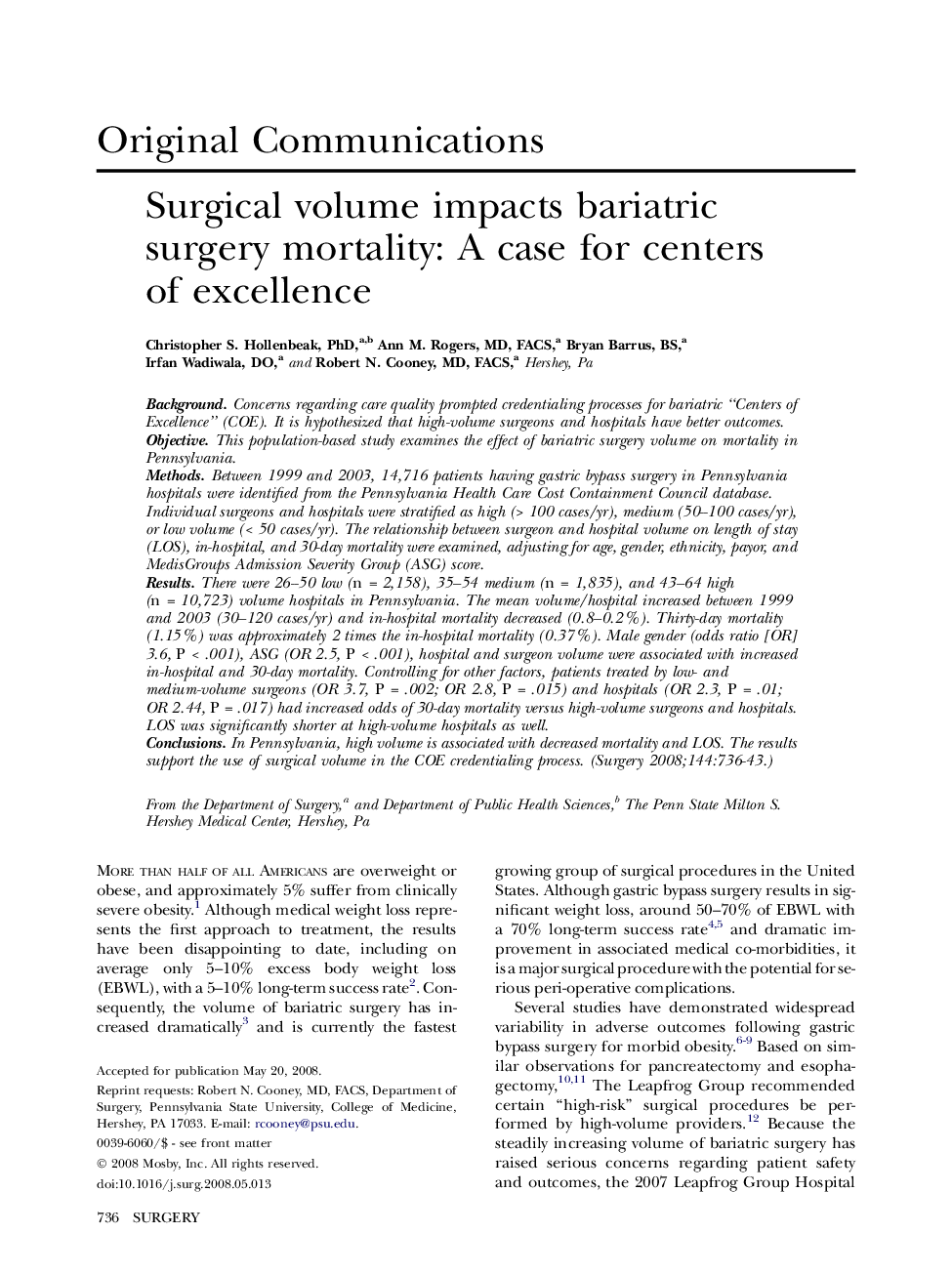| Article ID | Journal | Published Year | Pages | File Type |
|---|---|---|---|---|
| 4309672 | Surgery | 2008 | 8 Pages |
BackgroundConcerns regarding care quality prompted credentialing processes for bariatric “Centers of Excellence” (COE). It is hypothesized that high-volume surgeons and hospitals have better outcomes.ObjectiveThis population-based study examines the effect of bariatric surgery volume on mortality in Pennsylvania.MethodsBetween 1999 and 2003, 14,716 patients having gastric bypass surgery in Pennsylvania hospitals were identified from the Pennsylvania Health Care Cost Containment Council database. Individual surgeons and hospitals were stratified as high (> 100 cases/yr), medium (50–100 cases/yr), or low volume (< 50 cases/yr). The relationship between surgeon and hospital volume on length of stay (LOS), in-hospital, and 30-day mortality were examined, adjusting for age, gender, ethnicity, payor, and MedisGroups Admission Severity Group (ASG) score.ResultsThere were 26–50 low (n = 2,158), 35–54 medium (n = 1,835), and 43–64 high (n = 10,723) volume hospitals in Pennsylvania. The mean volume/hospital increased between 1999 and 2003 (30–120 cases/yr) and in-hospital mortality decreased (0.8–0.2%). Thirty-day mortality (1.15%) was approximately 2 times the in-hospital mortality (0.37%). Male gender (odds ratio [OR] 3.6, P < .001), ASG (OR 2.5, P < .001), hospital and surgeon volume were associated with increased in-hospital and 30-day mortality. Controlling for other factors, patients treated by low- and medium-volume surgeons (OR 3.7, P = .002; OR 2.8, P = .015) and hospitals (OR 2.3, P = .01; OR 2.44, P = .017) had increased odds of 30-day mortality versus high-volume surgeons and hospitals. LOS was significantly shorter at high-volume hospitals as well.ConclusionsIn Pennsylvania, high volume is associated with decreased mortality and LOS. The results support the use of surgical volume in the COE credentialing process.
